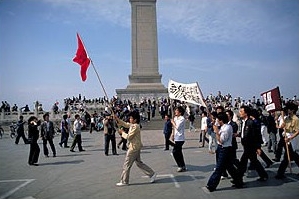During a month-long event known as the Tiananmen Square Protests, thousands of Chinese students and other protesters gathered to demand political reform. They sought an end to political corruption, economic changes, and the lifting of restrictions on fundamental human rights for Chinese citizens. Instead of diminishing over the month, the protests grew in size and intensity. However, on June 3, 1989, the People’s Liberation Army confronted the protesters with force, resulting in what is known as the Tiananmen Massacre.
When Hu Yaobang, a prominent politician in the Chinese government during the 1980s, died, political unrest erupted. Many citizens regarded him as a champion for reform, and his death sparked significant concern and discontent. Students from various universities began to gather in Tiananmen Square to demand the changes Hu Yaobang had started to implement. The protests quickly gained momentum as the number of students increased, and tactics like hunger strikes attracted sympathy and support from citizens across the country. At one point, over 1 million citizens were actively engaged in the protests.
The protests began in April 1989, and by May, the Chinese government, fearing the spread of the protesters’ demands, realized that they had to take action. They declared martial law and sent in military troops to address the unrest. On June 3rd, the military opened fire on the protesters and bystanders in Tiananmen Square, resulting in thousands of deaths and even more injuries. Following the massacre, the Chinese government launched a crackdown on its citizens, arresting anyone suspected of being involved in the attempted revolution.
The Tiananmen Massacre is a significant event in Chinese history, highlighting the lengths to which the government will go to silence dissenting voices.

